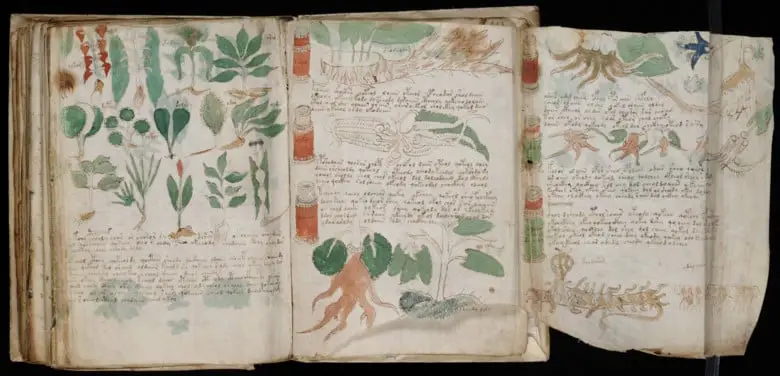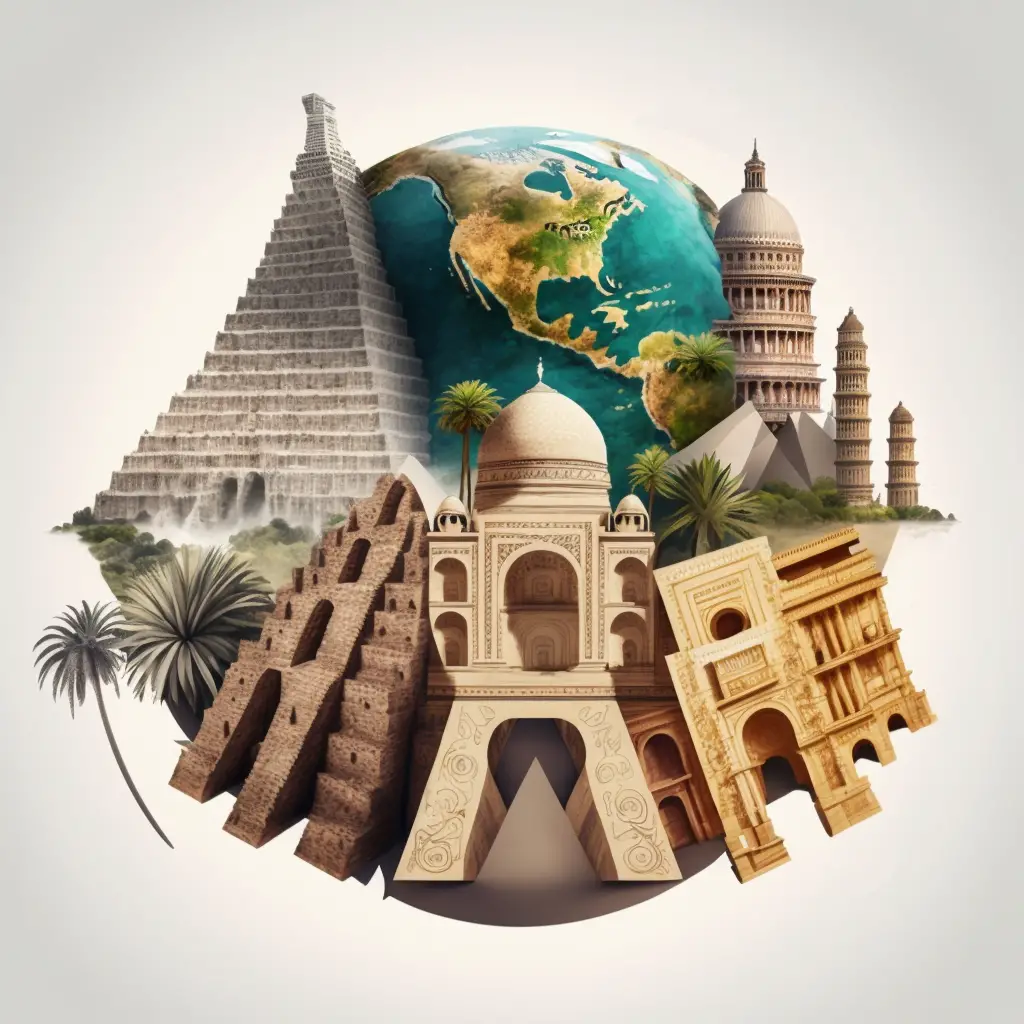
In 1999, a Swiss-Canadian filmmaker and aviator wanted to create something special with the advent of the new internet age. Bernard Weber asked himself:
“What could be the smallest common denominator, a sentence, a word, a concept that anyone on this planet would understand immediately and, hopefully, would get excited about?”
According to his account, he sat on this theory for a long while before finding out that only 1 in 6000 people was able to answer what the Seven Wonders of the World actually were. While everyone seemed to know about the sites themselves, they weren’t able to name them.
Essentially, he felt the list was out of date and only accounted for a small region of the entire world as it exists today. So, a seven-year ordeal began to include as many people as possible in voting for the new wonders of the modern world.
He established a non-profit, New Seven Wonders, with an associated for-profit business called New Open World Corporation, both located in Switzerland.
The contest, however, was not entirely democratic.
While over 100 million votes ended up being cast, mainly through the internet, there were several problems.
- Most people still didn’t have access to the internet. Even in 2022, only around 5 billion people have access, according to Statista.
- People weren’t prevented from voting twice.
- Several countries ran campaigns to get more votes for their own sites, heavily skewing the results.
While there were claims that UNESCO — the organization in charge of the world heritage sites — was associated with the project, they later abjectly denied involvement:
“The list of the 8 New Wonders of the World will be the result of a private undertaking, reflecting only the opinions of those with access to the Internet and not the entire world. This initiative cannot, in any significant and sustainable manner, contribute to the preservation of sites elected by this public.”
Needless to say, they didn’t like their name being thrown around all willy-nilly. After all, their commitment to the preservation of their 1,154 UNESCO world heritage sites is based on equality, not biased preferences.
Regardless, the launch had a tremendous amount of hype, and 177 submissions were trimmed down to seven based on votes from people around the world.
The New Seven Wonders of the World
After all of the biased votes were in, the results were still nothing less than wondrous. The new seven wonders of the world in alphabetical order are:
- Chichen Itza, Mexico
- Christ the Redeemer, Brazil
- Colosseum, Italy
- Great Wall of China, China
- Machu Picchu, Peru
- Petra, Jordan
- Taj Mahal, India
Putting any profit-oriented goals and biased voting aside, these remarkable sites are still something incredible to behold.
Let’s learn a bit about them, shall we?
Chichen Itza

Chichen Itza was a huge city built by the Maya people over 1,000 years ago in modern-day Yucatán, Mexico. The grand metropolis was considered the most diverse populace in the empire, likely resulting in its architecture being so unique and eclectic.
The city was ruled by the Mayan tribe Itzá who created a plethora of monuments and temples that withstood the test of time, to a degree. If you’ve ever seen photos of the grand pyramids of Mexico, this is where many came from.
Take, for example, the ancient pyramid El Castillo, meaning “The Castle”, which includes 365 steps rising 79 ft (24 m) into the sky. It’s no coincidence they used 365 steps as many of their architectural creations revolved around their intense beliefs in astronomical importance. Even in the autumn and spring equinoxes, as the sun set, the shape of a massive serpent winding its way down the stairs appears, leading down to a large stone statue of a snake’s head.
Chichen Itza means “Mouth of the Well of the Water Witches,” marking the entrance to a once extremely holy land. Fast forward to today, and the ruins are one of the most visited sites in Mexico, hosting millions of tourists every year.
Christ the Redeemer
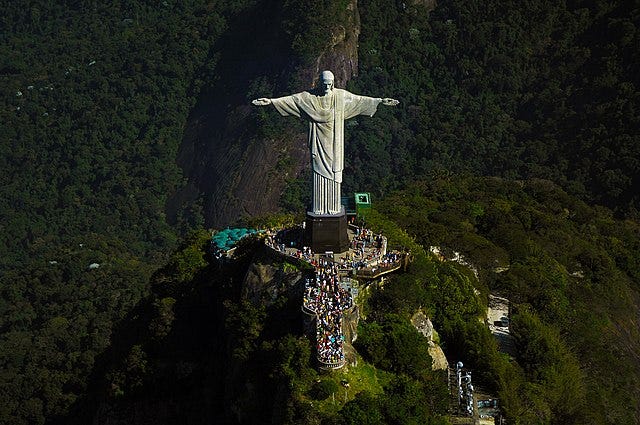
Number two on the list of the new seven wonders of the modern world is the gigantic statue of Jesus Christ, fittingly called Christ the Redeemer.
Located near the city of Rio de Janeiro in Brazil, the soapstone and reinforced concrete structure towers 98 ft (30 m) tall and sits on the peak of the Corcovado mountain. The holy figure first came into fruition in 1926 and took about 5 years to complete. With its arms stretched out in a wide welcoming manner, they extend 92 ft (28 m) across.
Somewhat similar to the Statue of Liberty, it was built in France before being shipped over and assembled from hundreds of smaller sections. It makes sense as it was a collaboration of Brazilian engineer Heitor da Silva Cost and Polish-French sculptor Paul Landowski.
The surface of the giant is covered in nearly 6 million tiles and weighs an insane 635 metric tons.
Colosseum

Ahh, the Colosseum. As a kid, I spent many a night reading about gladiators and their epic tales. But the Colosseum of Rome, Italy, was definitely the most famous place to host their battles.
Also known as the Flavian Amphitheater, the Colosseum got its other name after a large statue of a notorious Roman ruler — The Colossus of Nero — was erected at its entrance.
Its history was ripe with intrigue, gambling, the crazy will of the masses, and death. Lots and lots of death. Nearly 500,000 people are thought to have died within its stone walls, as well as 1 million unsuspecting animals.
It held gladiator fights, sometimes to the death, executions, mock battles of famous generals, and could even fill up with water to host fleets of warfaring sailors imitating great victories of days past. What a truly wondrous sight those 50,000 spectators would have seen back then.
Even its ruins, in the building which stands roughly 50% of what it used to be, hosts nearly 6 million tourists every year. I certainly hope to count myself among them, someday.
Great Wall of China
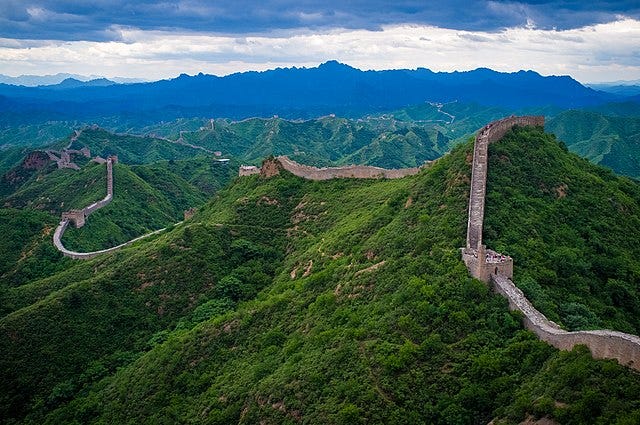
While it can’t actually be seen with the naked eye from space, the Great Wall of China is nothing short of a true wonder. Firstly, it’s considered the longest man-made structure in the entire world, winding over 5,500 miles (8,850 km) or 13,170 miles (21,200 km), depending on sources.
Construction first began in the 7th century BC, reaching from Lop Lake in the west to Liaodong in the east. It roughly follows the path of the ancient Mongolian steppe. Construction continued on the wall under various emperors — almost as a right of passage — all the way until the 16th century AD.
As for why the Great Wall of China was built in the first place, you can thank a Mongolian horde for one of the top reasons. Of course, it had far more benefits than just a supposed defensive barrier, which it apparently wasn’t too great at. It served as a demarcation point for government officials to tax traders traveling the famous Silk Road, as well as for control of immigration and other benefits of governance.
Along its thousands of miles, there were barracks, garrisons, watchtowers, and even beacons that could be lit by fire and warn nearby populaces of an encroaching army.
As for the name itself, the Great Wall of China is locally known as 萬里長城 (Wànlǐ Chángchéng), which translates to the “ten-thousand-mile-long wall.”
Machu Picchu
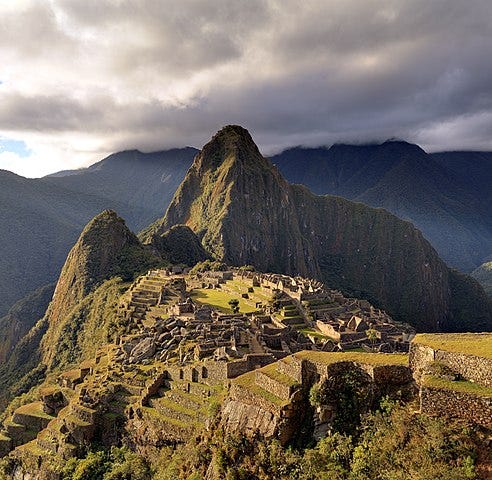
Located in modern-day Peru, Machu Picchu is an iconic citadel created by the Incas over 500 years ago. Located on the top of a mountain range, the vast Urubamba River flows nearby below.
As the Incas didn’t have a written language and no known Europeans had definitively visited before the 1900s, we can only base our assumptions of the site on examining the ruins.
Archaeologists believe Machu Picchu was a form an elaborate estate — or vacation home — for the ancient Inca emperor Pachacuti. While it was built around 1450, less than 100 years later it lay abandoned after the invasion of the Spaniards.
The unique buildings were created with polished stone and feature a vast network of intricate water management systems through strategically placed stone and gravel. To give a better experience for tourists and locals alike, many of the buildings have been reconstructed over the past several decades.
Petra
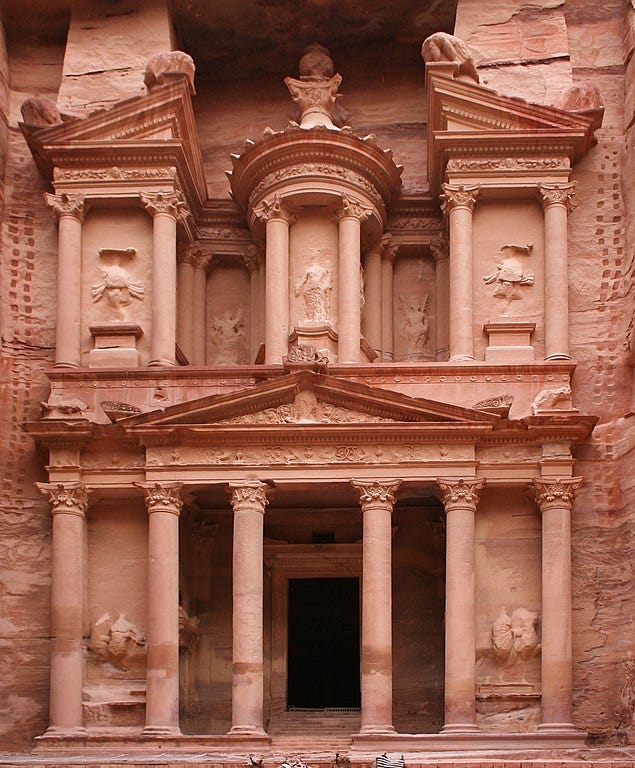
If you travel over to the desert sands of Jordan, you might find yourself facing grand rose-hued architecture built into the very sides of the mountains themselves. And that’s what Petra is. It was originally called Raqmu or Raqēmō, and Πέτρα in Greek, which stood for “Rock”.
The surrounding area has been inhabited by people dating all the way back to 7,000 BC, and Petra was later to become the capital city and trade hub of the ancient Nabataeans.
The gorgeous area was likely built out of necessity for shelter and defensive capabilities. And as the Nabataeans were skilled in stone carving and managing desert rain and growing food in the harsh environment, it made sense their living quarters were built in such a fashion. At its peak in the first century AD, it’s thought that around 20,000 individuals were living within its walls.
Taj Mahal
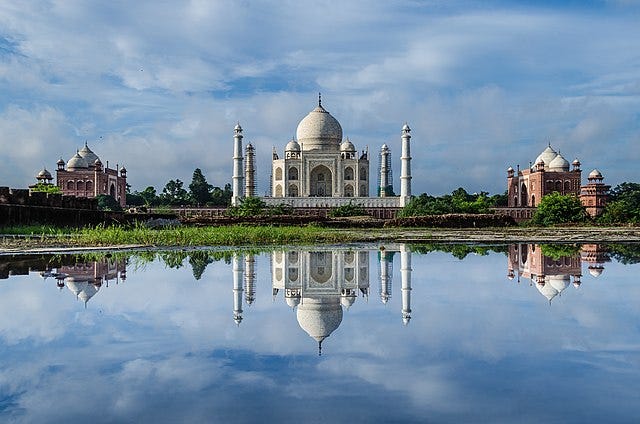
Possibly the most iconic site in India, the Taj Mahal is a grand testament to lost love. It was commissioned to be built by the emperor Shah Jahan in 1631 as the grandest tomb possible for his favorite wife, Mumtaz Mahal. She sadly passed away while giving birth to their 14th child.
The elaborate structure took more than 22 years to build in its entirety and is estimated to have cost what would be around $1 billion USD in today’s currency. Over 20,000 artisans were involved in its creation, a truly magnificent project.
While the Taj Mahal is made of intricate patterns with precious gems and white marble, the emperor is said to have wanted his own mausoleum to be made up of completely black marble in contrast. Sadly for him, he was deposed by one of those 14 children before construction ever began.
As such, he now lays at rest next to his beloved in the Taj Mahal itself. More than 6 million visitors travel each year to visit the eternal betrothed.
But what about the 8th new wonder of the world?
For those keen readers, you may have noticed UNESCO’s quote above mentioned eight wonders, not seven. That’s likely because Egypt was a bit displeased with the results of the polls and objected to their own magnificent pyramids not being in the final.
Either because of this or because the New Seven Wonders organization felt their reaction was justified, the Giza Pyramids were granted permanent honorary status on the list — for whatever that’s worth.

All in all, the list is certainly full of amazing sites that are among the most visited locations in the world today.
But it certainly wasn’t chosen by the people, as the organizers claimed. It was also bereft of non-bias, held government-funded campaigns to get more votes, and had an odd profit-oriented associated marketing company that very likely benefitted from all of the voting fees charged.
Hell, the release of the list was even held at a grand event featuring Jennifer Lopez, Chaka Khan, Ben Kingsley, Hilary Swank, and Bipasha Basu. I’m sure they didn’t appear for free.
As for those that didn’t make the list, the 13 other finalists for the New Seven Wonders of the World were:
J.J. Pryor
Head over here for more of my weekly s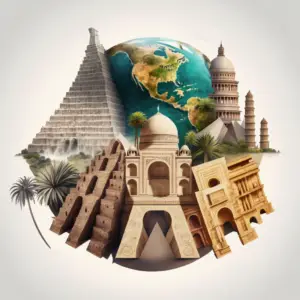 henanigans.
henanigans.



